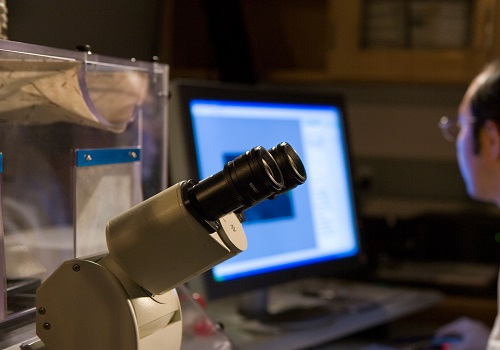Electrical Engineering
Tweaking the perfect recipe
Adjusting the cooking time is all it takes to tune the magnetic properties of these multi-functional iron nanowires.


Magnetic nanowires tailored for the task could make complex mixtures of cells simpler to separate.
© 2016 Alamy
Smart nanomaterials that respond to an external stimulus are a new breed of material that could shake up almost every area of science from healthcare to heavy industry. A KAUST-led research team has cooked up a new way to make magnetic-field-responsive nanowires whose properties can be tailored for a specific task simply by adjusting the length of time they are baked in an oven1.
The smart nanowires are easy and inexpensive to make, said Jürgen Kosel, who led the research. The team created a porous aluminium oxide template and used an electric current to draw iron into the pores, forming nanowires. By adjusting the conditions, the team could form single-crystal iron nanowires one micrometer long or polycrystalline iron nanowires 15 micrometers long.
These polycrystalline nanowires have great potential as a biomedical research tool, noted Kosel. After releasing the wires from the template, the researchers baked the nanowires at 150 degrees Celsius, a temperature that oxidizes the outside of the nanowire to form a biocompatible iron oxide shell. The longer the nanowires are baked, the thicker the shell and the lower their remanence, the residual magnetism the nanowires retain after an external magnetic field is applied and then removed.
Low remanence makes them perfect for cell separation, in which magnetic particles are used to pull certain cells from a mixture, Kosel said. If the particles retained a high residual magnetism, they would clump together rather than dispersing among the target cells.
“Yet, they should have a high magnetization when a magnet field is applied,” he noted. “This is exactly what those nanowires provide.”
The single-crystal iron nanowires behave differently. However long they are baked in the oven, they only form a thin iron oxide shell and they retain a strong residual magnetism. This robust magnetic behavior makes them suited to high temperature industrial applications, said Kosel. “In boreholes, magnetic beads are used for detecting the efficiency of wells. Our nanowires can survive higher temperatures and provide a stronger magnetic signature,” he added.
The team’s next step will be to tailor the nanowires to treat cancer, tuning them to heat up and selectively kill tumor cells when a magnetic field is applied. Nanowire-based sensors are another avenue of research. “The ability to tune the properties of the nanowires is the most important finding of our work,” Kosel said. “It allows for cost-efficient fabrication of one type of nanowire and tailoring it for many applications by simply putting it in an oven.”
References
- Ivanov, Y. P., Alfadhel, A., Alnassar, M., Perez, J. E., Vázquez, M., Chuvilin, A & Kosel, J. Tunable magnetic nanowires for biomedical and harsh environment applications. Scientific Reports 6, 24189 (2016).| article
You might also like

Bioengineering
Smart patch detects allergies before symptoms strike

Computer Science
Green quantum computing takes to the skies

Electrical Engineering
Micro-LEDs boost random number generation

Bioengineering
Sensing stress to keep plants safe

Computer Science
Sweat-sniffing sensor could make workouts smarter

Electrical Engineering
New tech detects dehydration by touching a screen

Electrical Engineering
A new interface for efficient electronics

Electrical Engineering



